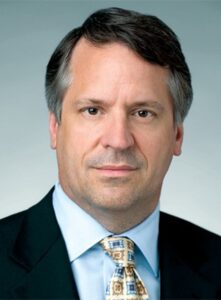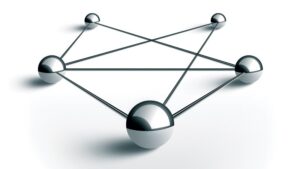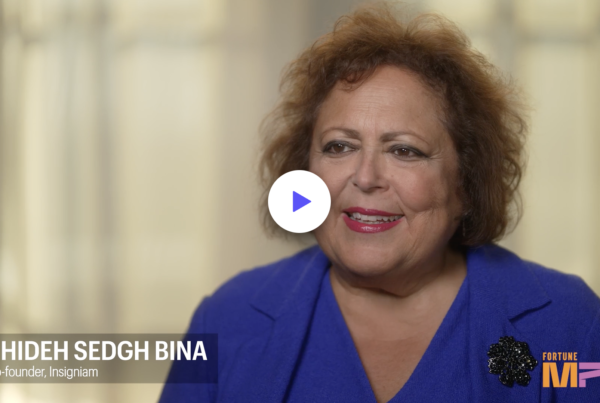W hen John Drzik became president of Marsh Global Risk and Specialties in January 2014, his mission was to bring together disparate parts of a complicated worldwide enterprise.
hen John Drzik became president of Marsh Global Risk and Specialties in January 2014, his mission was to bring together disparate parts of a complicated worldwide enterprise.
“What I had was, in many respects, a new job, configured by pulling together pieces of different roles that had existed previously,” Drzik says. Business leaders reporting to him had not previously worked as part of the same organization—making it a challenge to establish the identity of Global Risk and Specialties as a unit within Marsh.
Although there had been a Global Specialties business, it included only about half of the organization that Drzik now oversees. Other pieces were pulled in from the risk analytics, technology and consulting businesses.
A Map of Marsh & McLennan
Marsh is part of Marsh & McLennan Companies, which has a global team of 57,000 employees and annual revenue of $13 billion. As a matrix organization, Marsh, with 27,000 employees, has a very strong geographic axis, Drzik says. Each unit within Marsh faces the issue of trying to build a global business across a geographic P&L structure. “It was a question of trying to mold this into an organization that hadn’t previously been together before,” Drzik says, “and that would help our business leaders to address their common challenges.”Revising the structural framework of Global Risk and Specialties was only part of Drzik’s approach. For the unit’s brokerage specialty side, another goal was to strengthen connectivity among the people who work in global practices.
“We had practices like energy on the industry side and political risk on the product side,” Drzik says. “And these were businesses that could benefit in each geography by drawing on the full global capabilities of our team.”
New York-based Marsh & McLennan Companies comprises four operating companies:
Marsh
Insurance brokerage and risk managementGuy Carpenter
Risk and reinsurance intermediary servicesMercer
Talent, health, retirement and investment consultingOliver Wyman
Management, economic and brand strategy consulting
To address these challenges, he set out to increase the degree of communication and best-practice sharing across regions, with the idea that financial growth would be a byproduct of bringing Marsh’s full array of global knowledge to each client situation.
Drzik cites the Global Energy team as a good example: “Our energy leaders across regions started to build a globally aligned plan. The goals included more teaming across geographies on client assignments, more knowledge transfer from one geography to another, and shared recruiting and marketing strategies.”
This new cohesiveness also manifested itself in qualitative ways.
“We want people to feel like they’re as much a part of the Global Energy team as part of their geography,” Drzik says. “They should say, ‘I’m in Marsh Brazil, but I’m also part of Global Energy.’”
The Cyber Story
A similar approach to aligning companywide communication and execution was needed in another crucial growth area—cyber risk—and the rollout of new, innovative services.
Although Marsh has been a leader in the cyber risk market from the outset, it is becoming even more substantially involved as cyber insurance experiences explosive growth—between 50 and 100 percent per year, Drzik estimates. In 2014, there was a 28 percent increase in private and public-sector cyber breaches—783 total—over the previous year, according to the Identity Theft Resource Center. Through August 2015, organizations in the U.S. experienced 505 breaches, with 140 million records exposed.
“This is probably the No. 1 risk issue on the minds of boards of directors,” Drzik says. “They can’t insure all of the risk, but Marsh can provide services with respect to both [cyber] risk transfer and risk mitigation.”
There were three goals for the strategy, he says. First was to sustain Marsh’s leadership in cyber insurance brokerage. The second was to expand into adjacent areas like analytics and advisory services. Third, when it didn’t make sense for Marsh to build its own distinct set of services, it would partner with best-in-class companies to provide them.
In April, Marsh announced a partnership with Cyence, a cybersecurity analytics services provider, to create new services that will “help the risk management community effectively understand, measure and manage their cyber risk.”
“They had terrific technology, very unique cyber risk analytics,” Drzik says. “And we knew it would be highly beneficial for us in our core business of insurance brokerage and also in building out deeper advisory and analytical services for clients. They had analytics it would take us years to build ourselves.” Marsh is considering a few other partnerships to round out its offerings in the cyberrisk space.

Placing the Pieces
“This is different than what I had to do before,” Drzik says, reflecting on the past year. “I’ve gained an appreciation for the complexity and scale of an organization like Marsh.” Share on X Oliver Wyman—where he spent most of his career, becoming chairman in 2006—focused on only one major business line, management consulting. Although it included different industry practices, they were all in the same business, and a similar management approach could be employed.
“In Global Risk & Specialties at Marsh, we have different business models which need different types of people and require different types of management,” Drzik says. Count them: There’s a specialty brokerage business, a software business, a data and analytics business, two consulting businesses—the list goes on. “You can’t manage them all the same way,” Drzik says, “but they still need to fit together.”
When asked how exactly to gather all the businesses under one umbrella, Drzik laughs. “I was hoping you could tell me! You know, when you’re faced with a large and complex organization like Marsh, it’s easy to feel that it’s very hard to have an impact, because the organization has a lot of moving parts. But while it is challenging and difficult to do it, as a business leader you can. It just takes more time and thought and care than in an organization with a single business model.” Drzik pauses. “I mean—this is definitely a more complex challenge, but it’s a good one, and one that is motivating for me.” IQ






